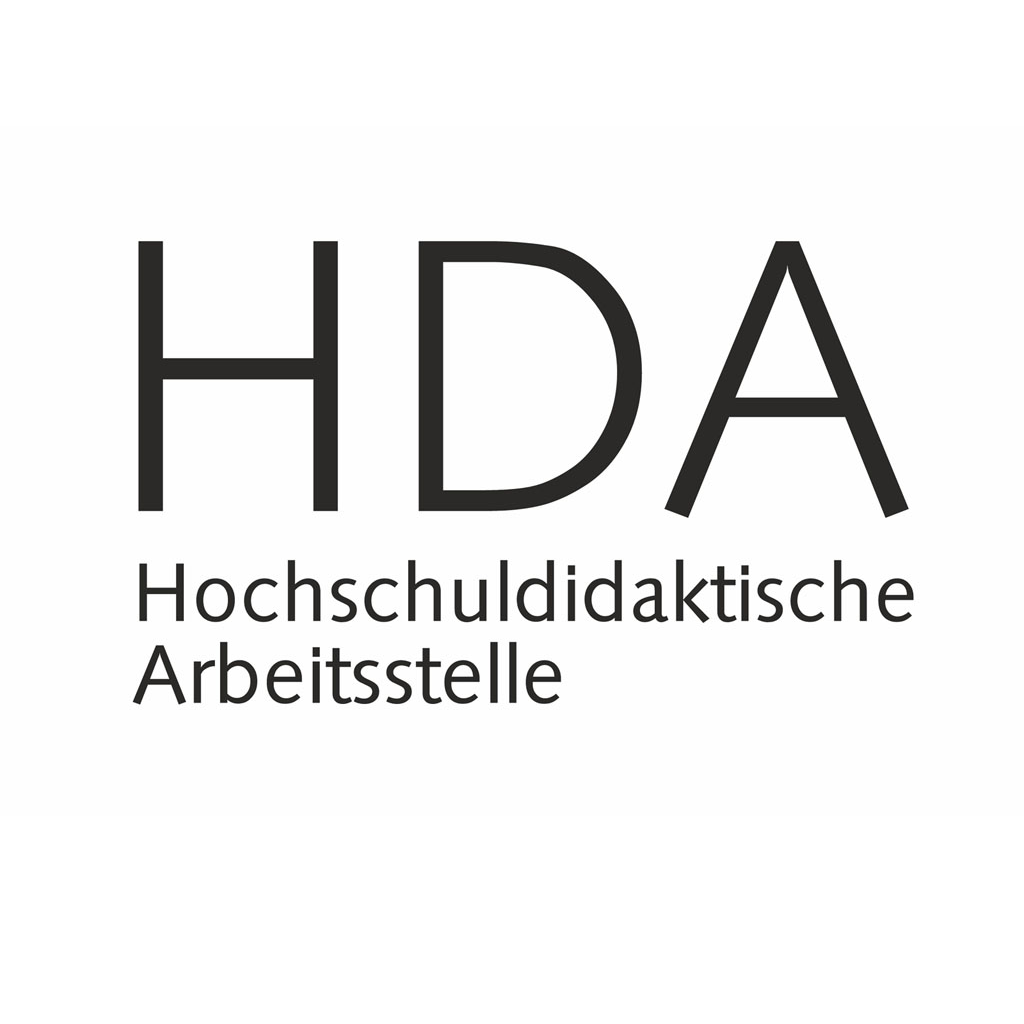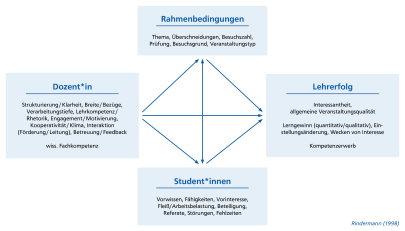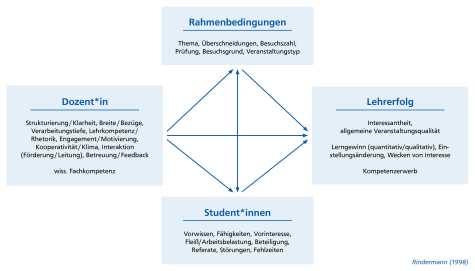Teachers use the course evaluation, …
- to recognise strengths and weaknesses of one's own teaching,
- to check the success of a chosen teaching concept,
- to derive a possible need for further training (e.g. in didactic concepts, utilisation of e-learning offers, etc.),
- to enter into dialogue with students about teaching,
- to document their own teaching performance.
Regularly conducting a course evaluation and observing changes enables teachers to further develop their individual teaching competence.
Departments use data from the course evaluation, …
- to identify a possible need for further training or counselling of teachers,
- to select “best practice” courses/lectures, which are then proposed for teaching awards, for example,
- to improve study conditions (e.g. technical equipment, use of technical aids for teaching, etc.).
Students benefit from participating in the course evaluation, …
- by being able to give direct feedback to teachers on a course,
- to influence certain aspects of a course or a teacher's teaching for future courses.
Course evaluation is thus a quality development tool from which all stakeholders can benefit.
Mutual appreciation of teachers and students is the basis for a high benefit of the results.
Topics of the course evaluation
The standardised questionnaires of the course evaluation ask for feedback on various aspects of teaching:
- Teaching content
- Presentation of the subject matter
- Teacher commitment (motivation to participate, supervision, answering questions, etc.)
- Requirements and workload
- Learning success and satisfaction
Further development of the questionnaires for the TU Darmstadt
Initially, there were a large number of questionnaires for the different teaching formats (lecture, seminar, exercise, etc.). Over time, these were further summarised and reduced on the basis of their intersections.
This reduced complexity and enabled comparability of results over time for quality control.



